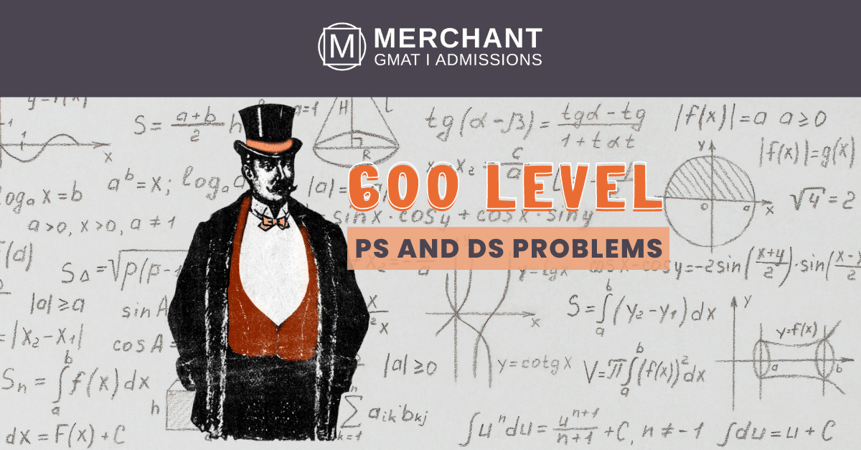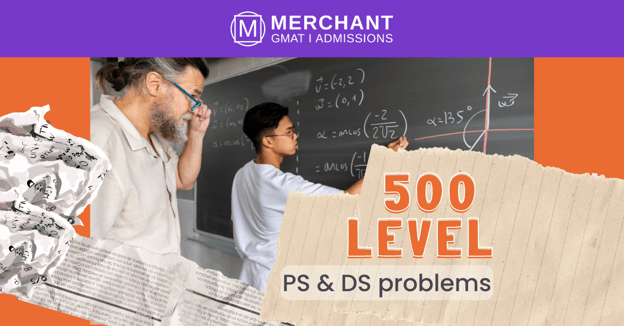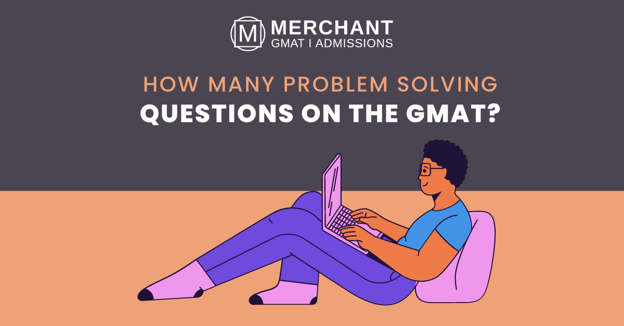Cracking the 600-Level GMAT Problem Solving and Data Sufficiency Problem: Tips and Strategies

While a 600-level GMAT score may seem daunting, there are steps you can take to prepare and increase your chances of success. In this blog post, we'll share examples, tips and strategies for tackling Problem Solving (PS) and Data Sufficiency (DS) problems at the 600-level. With perseverance and practice, you can crack the code on these tough questions. So let's get started!
The 600-level GMAT Problem Solving and Data Sufficiency problems are notoriously difficult - but why are they important to master?
The 600-level GMAT PS and DS problems require a greater level of technical knowledge and creativity. At the same time, mastering these complex questions is essential for achieving a high score on the GMAT and gaining acceptance into your dream MBA program. Knowing the underlying logic behind a given data set or problem statement can be crucial in distinguishing between correct and incorrect answers when attempting real test questions. Even though the robust nature of these GMAT questions presents a challenge, understanding and solving these tough problems can help to comparatively lighten other components of the exam due to its rigorous practice requirement. Therefore, it is important that test takers expend as much effort as possible on 600-level questions to better prepare them for this rigorous test.
An example of a 600 level Problem Solving problem and how to solve it
Solving 600-level problems can seem intimidating, but with practice and the right mindset, it can become an achievable goal. Take a look at a GMAT PS question as an example: Tina draws 7 cards from a standard deck of 52 cards. What is the probability that she draws exactly one Ace? To solve this 600 level GMAT problem, you first need to figure out how many ways there are to draw one Ace out of seven cards. The formula for this calculation is (4C1) X (48C6), which equals 4 x 17,296 giving a total of 69,184 ways to draw one Ace from seven cards. Now we need to calculate the total number of combinations possible when drawing cards from a deck of 52. That calculation is (52C7), which equals 451,520. Dividing 69,184 by 451,520 will give you the final answer: 0.1527 or 15.27%. So in this example the probability of Tina drawing exactly one Ace is 15.27%.
Tips and tricks for solving 600 level Problem Solving problems
Taking on 600 level PS problems can seem challenging at first, but there are simple strategies you can employ to tackle any problem. Make sure that before you start solving the problem itself, you have a solid grasp of the fundamentals - that you understand the terms and variables involved. Once you have those concepts down, begin by slowly reworking the problem in multiple forms until you reach a solution that is clear and intuitive. Furthermore, it's important to consciously steer your thinking away from potential traps; remember that practice makes perfect. Finally, try breaking down the problem into smaller parts as this will help you better comprehend the issue itself. By employing such tactics and cultivating a creative mindset, any challenge posed by 600 Level PS problems is bound to be manageable.
An example of a 600 level Data Sufficiency problem and how to solve it
DS problems are a challenge, even for the most capable mathematicians. For those unfamiliar with the format, DS questions require the test-taker to analyze two pieces of data and determine if it is enough information, based on the given statement or question, to answer. An example of a 600 level DS problem is one asking if an equation has infinitely many solutions related to its x coordinate. To solve such a problem, start by determining what type of equation you're working with (for example a quadratic equation) and then look at any constraints within that equation that may limit the scope of potential solutions. From there, use your knowledge of equations and inequalities to find out if the potential solutions are infinite or limited. Best practice would be to count up potential solutions while considering the limitations of each solution found along the way in order to make sure no other feasible solution remains unknown.
Tips and tricks for solving 600 level Data Sufficiency problems
When it comes to cracking the toughest DS questions, 600-level puzzles require a highly analytical approach. The first step would be to understand the question thoroughly and recognize what type of mathematical reasoning is required. Knowing basic rules and facts from math, geometry, and algebra can be helpful in analyzing and comprehending the problem statement at hand. Furthermore, careful observation of the two possible answers for each problem is essential too. Understanding how the individual answer choices interact with each other can give important clues about what information you need to look for in order to come up with a correct response. Lastly, having knowledge of standard shortcuts and approaches used by other test takers can help avoid wasting precious time trying out random solutions due to frustration or confusion. With practice and dedication toward mastering data sufficiency problems of all levels, prospective exam takers can face even the toughest 600-level questions feeling confident.
Don't be afraid to ask for help if you're stuck - there are plenty of resources available online and in person that can assist you
It's natural to feel trapped when you're trying to solve a problem and can't find a solution. The truth is, however, that you are never really alone in this situation. There are always resources available online and offline which can assist you in breaking through your sticky circumstances. Those who hesitate to ask for help often use up more energy than they need to in order to reach their end goal; by utilizing some external assistance, you can save yourself both mental and physical exhaustion. Don't be afraid to open up and accept help; the journey is just as valuable as the destination.
In conclusion, it’s clear that at the 600-level GMAT PS and DS problems can be tricky, but with a step-by-step approach you can tackle them with confidence. You saw through examples of both PS and DS problems how to approach the problem in a systematic way and think through each step logically. Additionally, we also discussed tips and tricks for getting the most out of solving these questions such as making diagrams or writing things down. Lastly, don’t forget to leverage outside resources when needed: if you get stuck on a question, you can always turn to outside expert help for answers. The team at Merchant GMAT is well versed in the nuances of 600-level GMAT questions and would be pleased to provide assistance to any aspiring business school applicants. Don’t just apply – stand out with our help. Good luck!

.png?width=624&height=427&name=Copy%20of%20MONTH2_MICRO3_NANO_1_7%20(1).png)

.png?width=624&height=427&name=MONTH2_MICRO3_NANO_1_7%20(1).png)
